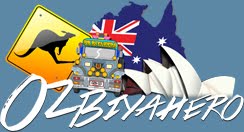My first investments in CommSec Pocket
Well, the markets are down but so is the AUD. It is time to invest in the sharemarket.
I have chosen IOZ and NQD and soon SYI
about CommSec Pocket App (source CBA)
An app so simple, it turns a non-investor into an investor
You can start investing with as little as $50, and gradually build a portfolio over time. Choose from 7 themed investment options and invest in something that appeals to you, like tech, sustainability leaders, or the biggest 200 companies on the Aussie market. We’ll help you along the way with bite-sized tips, videos, and articles to teach you all about the share market.
How it works
When you invest via CommSec Pocket, you’ll be buying units in an Exchange Traded Fund (ETF). ETFs are funds that trade on a stock exchange, just like shares – the difference is that an ETF represents an investment in a selection of companies and assets, while a share represents an investment in just one company. One ETF can give you exposure to a whole diverse portfolio.
Every ETF in CommSec Pocket has a theme. See below for all the options you can choose from, covering different industries, markets or countries.
Investment options
Invest in something that matters to you, with 7 options to choose from:
Benefits
Simplified investing, anytime, anywhere.
Brokerage
When you trade through the app, you’ll pay $2 each time you invest or sell up to $1,000.
Trades over $1,000 are charged at 0.20% of the trade value. For example, a $1,100 trade will cost you $2.20 ($1,100 x 0.20%)
Zero account keeping fees
It costs nothing to have an account. Ever.
Late settlement fee
Cash is debited from your account 2 business days after your trade is done. This is when your trade settles. If there are insufficient funds when we debit, you’ll be charged a $10 Late Settlement Fee.
ETF management fee
Each ETF provider charges a management fee for providing the ETF to investors. The fee ranges from 0.09% to 0.67% of your investment per year depending on the ETF. It’s not an out-of-pocket fee. Rather, it’s deducted from the ETF’s unit price. The fee is shown when you browse the investments. The fee is charged by the ETF provider, not by CommSec.
Supplementary services
Fees apply for supplementary services. For more info, see our Financial Services Guide.
Per discussion in Whirlpool forums, here are the expense ratios
Aussie Top 200 – iShares Core S&P/ASX 200 ETF – IOZ 0.09%
Aussie Dividends – SPDR MSCI Australia High Dividend Yield Fund – SYI 0.35%
Global 100 – iShares Global 100 ETF – IOO 0.40%
Emerging Markets – iShares MSCI Emerging Markets ETF – IEM 0.67%
Health Wise iShares Global Healthcare ETF = IXJ 0.47%
Sustainability Leaders – BetaShares Global Sustainability Leaders – ETHI 0.57%
Tech Savvy – BetaShares NASDAQ 100 – NDQ 0.48%
Aussie Dividends – SPDR MSCI Australia High Dividend Yield Fund – SYI 0.35%
Global 100 – iShares Global 100 ETF – IOO 0.40%
Emerging Markets – iShares MSCI Emerging Markets ETF – IEM 0.67%
Health Wise iShares Global Healthcare ETF = IXJ 0.47%
Sustainability Leaders – BetaShares Global Sustainability Leaders – ETHI 0.57%
Tech Savvy – BetaShares NASDAQ 100 – NDQ 0.48%
How do take advantage of this app and how to do investing?
To borrow the words of 'blueka' member of Whirlpool:
If you choose to invest lets say $1000pw then you're going to be paying $104 in brokerage in 1 year. You'll have $52,000 invested.
What are your alternatives to invest $52,000?
You could do $26,000 semi-annually and pay a total of $62.40 in brokerage.However, you will miss out on returns having $0 invested for 6 months, and similarly missing out of $0-$25000 for the other 6 months, which in all probability will be higher than the $41.60 you save in brokerage costs.
The CommSec App is a tool that is handy and mobile; making you able to react and invest immediately. Remember that in investing, time is valuable. Make it Count!
















